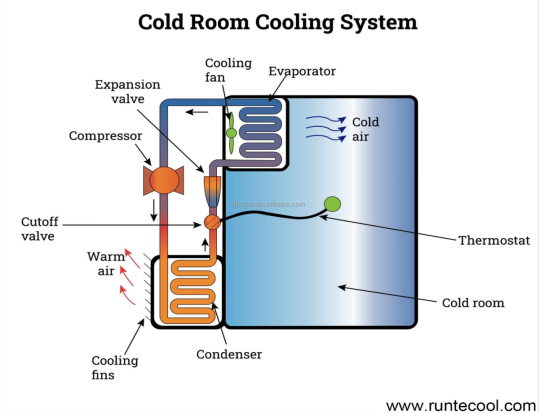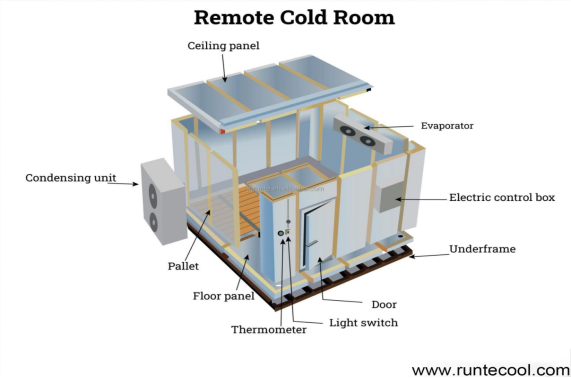1. Poor insulation of the cold storage body The insulation performance of the cold storage enclosure structure will age and degrade over time, resulting in cracking, shedding and other problems, leading to increased cold loss[13]. Damage to the insulation layer will significantly increase the heat load of the cold storage, and the original cooling capacity will be insufficient to maintain the design temperature, resulting in an increase in the storage temperature.
Fault diagnosis: Scan the wall panels of the cold storage with an infrared thermal imager, and find areas with abnormally high local temperatures, which are insulation defects.
Solution: Regularly check the integrity of the insulation layer of the cold storage body, and repair it in time if it is damaged. Replace new high-efficiency insulation materials when necessary.
2. The cold storage door is not tightly closed The cold storage door is the main channel for cold loss. If the door is not tightly closed, cold air will continue to escape, and high-temperature air from the outside will also flow in[14]. As a result, the temperature of the cold storage is difficult to drop and condensation is easy to form inside the cold storage. Frequent opening of the cold storage door will also aggravate the cold loss.
Fault diagnosis: There is obvious cold air outflow at the door, and light leakage at the sealing strip. Use a smoke tester to check the airtightness.
Solution: Replace the aged sealing strip and adjust the door to fit the sealing frame. Reasonably control the door opening time.
3. The temperature of the goods entering the warehouse is high. If the temperature of the newly entered goods is high, it will bring a lot of sensible heat load to the cold storage, causing the warehouse temperature to rise. Especially when a large number of high-temperature goods are entered at one time, the original refrigeration system cannot cool them to the set temperature in time, and the warehouse temperature will remain high for a long time.
Fault judgment: Measure the core temperature of the goods entering the warehouse, which is higher than the warehouse temperature by more than 5°C
Solution: Pre-cool the high-temperature goods before entering the warehouse. Control the batch size of the single entry and evenly distribute it in each time period. Increase the capacity of the refrigeration system if necessary.
Post time: Dec-24-2024







